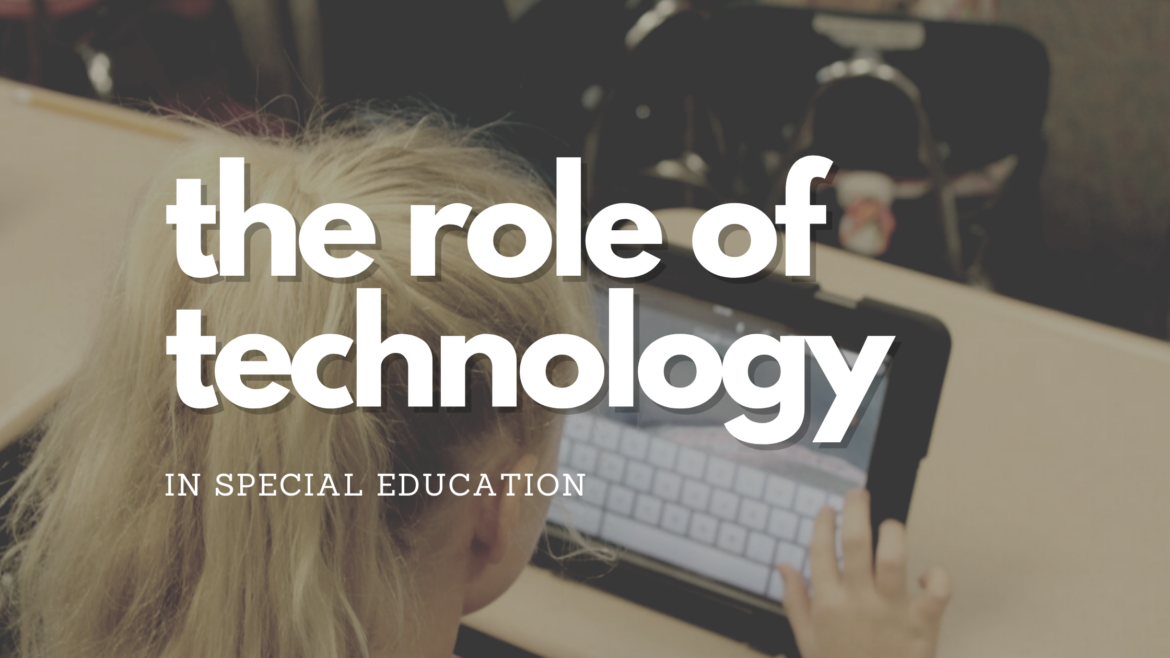Every child is entitled to the highest quality education. But some students struggle more than others. For some students, school is not always a place of excitement and discovery; it’s a place of frustration or disappointment. Students enrolled in special education programs are particularly vulnerable to these negative school experiences.
But it doesn’t have to be that way. Technology is playing an increasingly important role in special education, revitalizing the learning experience and creating new avenues of accessibility for America’s most vulnerable students.
Defining Special Education
In many ways, all education can be considered “special,” at least in the fact that no two students have the same learning needs. All education, theoretically, is to be tailored to the particular requirements, strengths, needs, and goals of individual students.
For students in special education programs, however, those individual needs may be more extensive or complex. Students may require more intensive and personalized support to address many challenges, from the academic and developmental to the behavioral and psychosocial.
Unfortunately, students have traditionally struggled in special education programs. Educators and school systems have long been challenged by access to the knowledge and resources needed to serve students’ particular needs. Modern educational technology, though, can help change that. It not only provides teachers with access to training resources to help them understand individual students’ needs, but it also allows teachers to use technology to provide customized resources perfectly suited for students’ needs.
For instance, traditional teaching materials, such as textbooks, are typically created for students without special learning needs. They can’t be readily modified for students with reading challenges or vision or mobility impairments. Rather, alternative texts and materials must be ordered in advance, which is time-consuming and may prove insufficient to meet students’ often unpredictable and evolving needs.
Innovations in educational technology, though, are now equipping teachers with the tools they need to transform these children’s learning experiences forever. Thanks to these evolving technologies, children in special education programs can now look forward to each new day of learning, rather than dreading it.
Increasing Accessibility
According to recent estimates, nearly 13% of students in American public schools, or approximately 7 million American schoolchildren, are enrolled in special education courses. The sheer size and diversity of this student population, however, is precisely what has contributed to past problems in US special education.
Curricula and teaching materials alike simply have not been able to adapt to and accommodate the immense range of student needs, requirements, and, capabilities. However, technology is rapidly changing that.
The most significant example of the highly adaptive nature of today’s technology is in the myriad accessibility options that are not only available but are required by law on websites. Website accessibility regulations, for instance, require alternative platforms for accessing web content.
These alternative formats can enable students to research, study, and complete school-related tasks on web-based platforms. The accessible internet, by law, is capable of accommodating students with an array of particular needs, including students with vision, hearing, and motor impairments, as well as those with cognitive or developmental challenges.
Bilingual students are not, by definition, special education students unless they have also been diagnosed as having a particular learning challenge beyond the language barrier. Nevertheless, bilingual students necessarily face a unique and significant set of challenges that monolingual students do not. Further, they can benefit from technologies similar to those proven to help students facing other challenges, such as language, speech, or reading deficits.
Students in US schools for whom English is a second language may struggle with the language barrier far more than the learning content itself. However, technologies, such as the Immersive Reader, can help students who are endeavoring to learn English as a second language, as well as students who are confronting literacy delays.
Enabling Customization
Today’s educational technology is also proving invaluable at providing customized learning experiences. These increasingly accessible, affordable, and user-friendly resources give teachers, students, and families alike more power than ever before to tailor the child’s learning to their particular needs, strengths, and interests.
For instance, many students in special education programs struggle in the traditional classroom. Physical conditions may limit the child’s stamina or ability to participate in a traditional school day on campus, and it may expose compromised children to a host of potentially life-threatening illnesses.
Additionally, children with developmental or behavioral challenges, particularly those on the autism spectrum or those with sensory processing disorders, may be overwhelmed and paralyzed by the traditional classroom environment. This is where the benefits of educational technology truly shine through.
When students are unable, for whatever reason, to learn effectively on-campus technology offers an alternative. Virtual classrooms and digital learning technologies can allow students in special education to receive real-time, high quality, eminently customizable instruction from their homes or hospital rooms.
Online learning allows students to work largely at their own pace, taking rest breaks and time outs when needed. It can also, perhaps paradoxically, allow more one-on-one interaction with teachers. Remote learning instructors can not only interact with the student in face-to-face virtual meetings on a daily, weekly, or biweekly basis, but they can also exchange emails, discussion posts, and even chat, text, and social media posts and messages throughout the day.
The Takeaway
Technology has changed virtually every aspect of our modern lives, generally for the better. Perhaps nowhere is this more evident, however, than in the use of technology in special education. Through education technology, special education teachers can offer accessible, customized learning experiences specifically tailored to individual student needs. This means that students in special education programs can experience the wonders of learning and the pride of achievement.
Image via Pixabay


